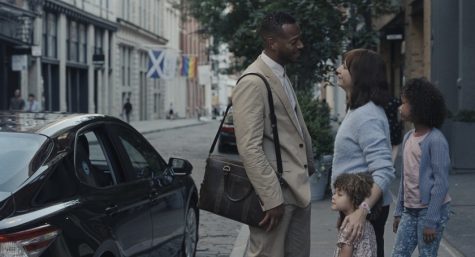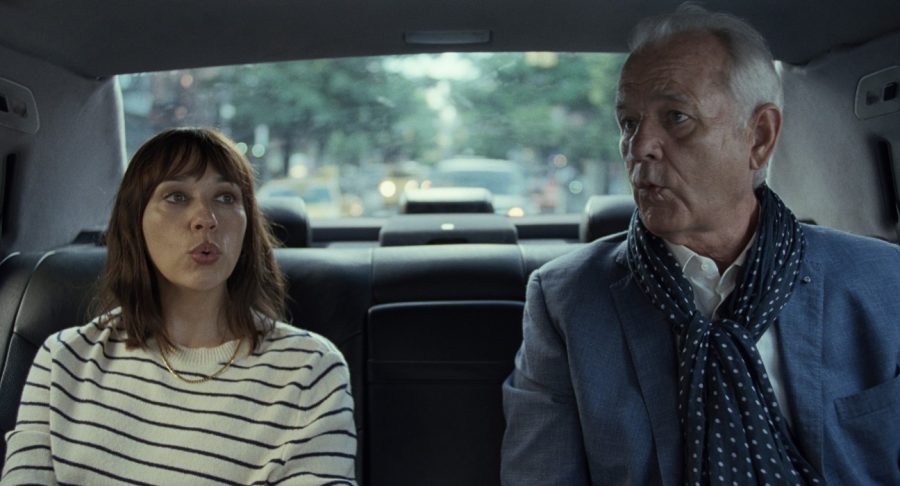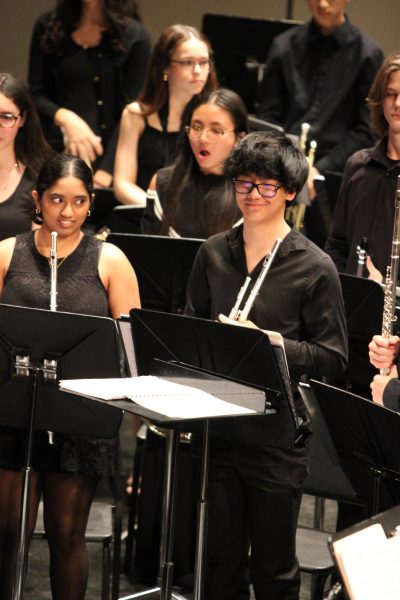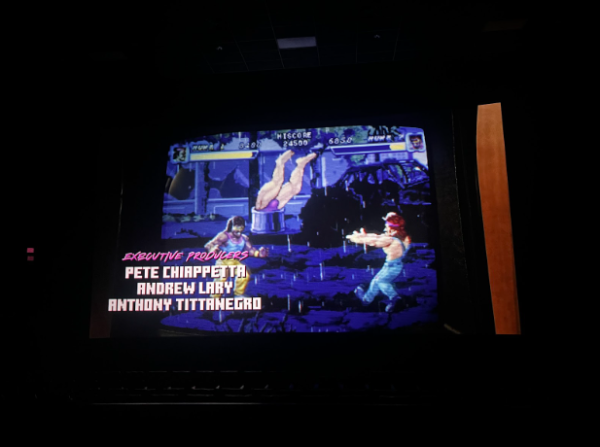“On the Rocks” showcases Sofia Coppola’s technical flare without the full command of her craft
Sofia Coppola’s new feature film starring Rashida Jones and Bill Murray reaches its bare minimum but doesn’t trek her higher ground.
Rashida Jones’s Laura and Bill Murray’s Felix as they ride around New York City together.
On Friday, Oct. 23, Apple TV+ released Sofia Coppola’s newest film, “On the Rocks.” The film stars Rashida Jones as Laura, a married woman with two daughters who suspects her husband, Dean, of infidelity. Because of this, she tails him frequently with her exuberant father, Felix, played by Bill Murray.

“The film looked really nice in how it depicted the bond between Felix and Laura,” said Calvin Sayad, junior.
While this is the first time Jones and Coppola have collaborated on a project, this is her third time working with Murray. The first came in her critically acclaimed feature “Lost in Translation” in which Murray played a washed-up actor suffering a midlife crisis. He received an Academy Award nomination, BAFTA, and Golden Globe for his performance. The second came in the Christmas musical comedy “A Very Murray Christmas” which also received positive critical reception.
The best aspect of the film is its technical aspects. Coppola crafts a dark blue color palette with the beautiful backdrop of New York City for the majority of the film. Her use of long shots and extreme long shots with high angles help to establish the setting’s realism that she strived for. This ensconced me into the film and was the primary thing I reflected upon after watching.
One of my personal favorite tools that Coppola can command so effectively is wordless storytelling. “Lost in Translation” captures this vividly. The film is quiet but beautiful from start to finish, using the tools available to her (acting, cinematography, editing) to say something without words. She captures some of that here as well. Like “Lost in Translation,” it also helps add to the present dramatic, melancholic tone, whether it be a shot of Laura walking through the city, sitting at her computer in her apartment, or just a shot of the landscape itself.
The film is a manageable 96 minutes long and an easy watch from start to finish. Coppola rides the premise throughout to keep the audience intrigued, and I never thought it became predictable or boring. Sadly though, the final product from this base ingredient is nothing to write home about. Coppola’s certainly capable of turning a premise into a story that is unforgettable, but the full command of her craft is noticeably lacking here.
To be fair, the story never becomes unbearable. The film gives some interesting commentary on the stability of relationships and the effect that children have on them. Coppola crafts a cause-and-effect relationship between the latter and the former. The issue is that it gets so lost in the weeds that it never leaves a lasting effect, despite what I inferred to be a more impactful intent by Coppola. It rides its premise like a wave and when it hits the shore you’re left feeling fine. That’s it, fine.
The screenplay attempts to blend a sense of drama and comedy. Most of the comedy comes in the form of Felix’s charm. His discussion topics transition from talking about the history of caviar to the primal attraction in early humans like it’s just a walk in the park. While I didn’t find the comedy to be unbearable, it seemed like Coppola struggled to balance the two genres instead of mixing them. This makes numerous scenes from the film have a notable taste of one without the other.
Overall, the film takes an intriguing premise and beautiful technical aspects and turns it into a piece that’s just fine, nothing more and nothing less.
You can watch “On the Rocks” on Apple TV+ with a monthly subscription.

Steven, a senior, is enthusiastically returning to the Devils' Advocate staff this year. He loves to watch the Cubs and analyze statistics in baseball,...












